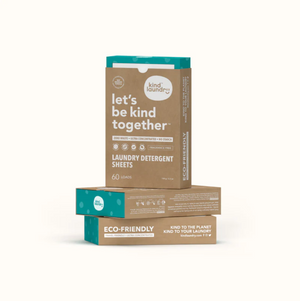What is an Allergy?
An allergy is an overreaction of the immune system to substances that are typically harmless to most people. These substances, called allergens, can range from foods and pollens to materials like fabrics. When someone with an allergy encounters their specific allergen, their immune system misidentifies it as a threat and produces an exaggerated response. This reaction can manifest in various ways, including skin rashes, respiratory issues, or gastrointestinal discomfort, depending on the allergen type and exposure route. Allergies are common and can develop at any stage in life, often requiring careful management to reduce symptoms and improve quality of life.
What is a Polyester Allergy?
A polyester allergy is a type of contact dermatitis caused by the synthetic fibers in polyester fabrics. It occurs when the skin reacts negatively to polyester materials, often exacerbated by sweat, heat, or friction. While rare, this allergy can cause significant discomfort for those affected. Types of polyester allergies include direct contact allergies, where skin touches polyester fabrics, and respiratory allergies triggered by particles or chemicals released from polyester materials. Understanding the specific type of reaction is essential for effective management and treatment.

Polyester Allergy Symptoms
Polyester allergy symptoms can vary in severity and often affect areas of the body that come into direct contact with polyester. Common symptoms include:
- Rashes: Red, inflamed patches of skin that may feel itchy or irritated.
- Hives: Raised, itchy welts on the skin that may appear and disappear quickly.
- Red Marks: Persistent redness on the skin, particularly where polyester has been in contact.
- Itchiness: A constant urge to scratch affected areas, which can lead to further irritation or infection.
- Dry or Scaly Skin: Areas exposed to polyester may become excessively dry or flaky.
- Blisters: In severe cases, small fluid-filled bumps may develop.
- Swelling: Affected areas might become puffy or swollen.
- Burning Sensation: Some individuals report a feeling of warmth or stinging in the areas affected.
These symptoms typically appear shortly after exposure to polyester and can worsen with prolonged contact or repeated exposure.
Polyester Allergy Treatment
Avoiding Polyester
The most effective way to manage a polyester allergy is to avoid direct contact with polyester materials. Opt for clothing, bedding, and furnishings made from natural fibers such as cotton, linen, or wool. Check clothing labels carefully and prioritize hypoallergenic fabrics. It’s also important to consider household items like curtains or furniture upholstery, as they may contain polyester blends.
Over-the-Counter Medications
For mild reactions, over-the-counter (OTC) remedies can help alleviate symptoms. These include:
- Antihistamines: Medications like diphenhydramine or loratadine can reduce itching and swelling.
- Hydrocortisone Cream: A topical steroid that can soothe rashes and inflammation.
- Moisturizers: Hypoallergenic lotions can hydrate dry or scaly skin and restore the skin’s barrier.
If symptoms persist or worsen, consult a healthcare provider for stronger treatments, such as prescription-strength creams or oral medications.
Polyester Alternatives and Prevention
If you’re allergic to polyester, switching to alternative fabrics is key to preventing future reactions. Natural fibers are generally more breathable and less likely to irritate sensitive skin.
Here are some great options:
- Cotton: Soft, breathable, and widely available, cotton is an excellent substitute for polyester in clothing and bedding.
- Linen: Lightweight and moisture-wicking, linen is perfect for warm weather.
- Silk: Known for its smooth texture, silk is gentle on the skin and hypoallergenic.
- Wool: A warm, natural fiber that’s ideal for cold climates, although it may not suit everyone with sensitive skin.

Why You Should Wash New Clothes Before Wearing Them
Washing new clothes before wearing them is a crucial yet often overlooked step in maintaining personal hygiene, protecting your skin, and preserving the quality of your garments. Although new clothes may appear pristine, they often harbor hidden concerns such as residual chemicals, accumulated dirt, and the potential for irritation. Below, we delve into the top reasons why washing new clothes is a habit worth adopting.
Remove Manufacturing Chemicals
New clothes undergo various chemical treatments during production to achieve the desired color, texture, and finish. These chemicals include dyes, formaldehyde resins, and finishing agents designed to prevent wrinkles and shrinkage. While these treatments enhance the appearance of clothing, they can leave a residue that may irritate your skin, especially for individuals with sensitive skin or allergies. Washing new garments removes these residual chemicals, reducing the risk of skin reactions and ensuring a safer experience.
Eliminate Dirt and Dust
Clothing often travels long distances from the manufacturing facility to the store shelf. Along the way, it may be exposed to dust, dirt, and debris from factories, shipping containers, and storage warehouses. Even in retail stores, clothes can gather dust while hanging on racks or being tried on by multiple customers. A thorough wash ensures that any accumulated particles are removed, leaving your clothes fresh and clean.
Protect Against Skin Irritation
The chemicals used in clothing production and any lingering dust or dirt can cause skin irritation, rashes, or allergic reactions. This is particularly true for intimate garments, such as underwear or baby clothes, which come into close contact with sensitive areas of the skin. Pre-washing your clothes helps minimize these risks, creating a more comfortable wearing experience.
Remove Microbial Contamination
Garments are often handled by multiple people during manufacturing, packaging, transportation, and display in stores. As a result, new clothes can harbor bacteria, fungi, or even viruses. Washing your clothes before wearing them helps eliminate these microorganisms, reducing the potential for infections or skin issues.
Enhance Comfort
Many new clothes are treated with stiffeners or starches to maintain their shape and appeal on the store rack. While this may make them look attractive, these treatments can leave the fabric feeling stiff or scratchy. A wash softens the material, making it more comfortable to wear.
Preserve Longevity
Washing new clothes not only ensures cleanliness but also helps set the dye and fabric structure, which can improve the garment’s longevity. This is particularly important for brightly colored or dark clothing, as it reduces the likelihood of dye bleeding or fading in subsequent washes.
Develop Healthy Habits
Adopting the habit of washing new clothes before wearing them is a simple yet effective practice for maintaining hygiene and protecting your health. It’s especially important for families with infants or individuals with allergies, as it minimizes the exposure to potential allergens and irritants.
While it may seem like an unnecessary extra step, washing new clothes before wearing them is a practical and hygienic choice. It removes harmful chemicals, dirt, and microbial contaminants, while also enhancing the comfort and durability of your garments. By incorporating this small habit into your routine, you can enjoy cleaner, safer, and longer-lasting clothing.
Use High Quality Laundry Detergents
Opt for fragrance-free, dye-free laundry detergents to minimize skin irritation. Kind Laundry detergent sheets are an excellent choice, as they are plant-based, free of harsh chemicals, and gentle on sensitive skin. Kind Laundry detergent sheets are enhanced with enzymes and powerful plant-based extracts to not only offer an effective clean, but also protect fabrics. The sheets are kind on your skin and the planet as they are eco-friendly and zero-waste. Kind Laundry detergent sheets are free from parabens, phthalates, optical brighteners, dyes, phosphates, formaldehyde, 1,4 dioxane, and starch.
Layer Clothing To Help Prevent A Polyester Allergy
If you must wear polyester, layering it over a natural fiber base can reduce direct contact with your skin.
By adopting these alternatives and strategies, individuals with polyester allergies can reduce their risk of reactions while maintaining comfort and style.















